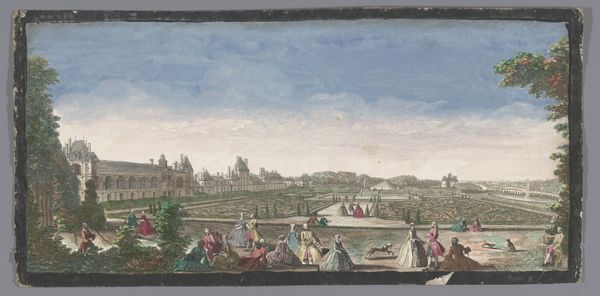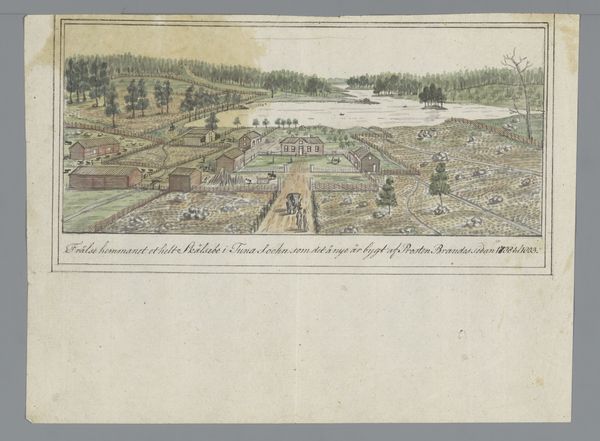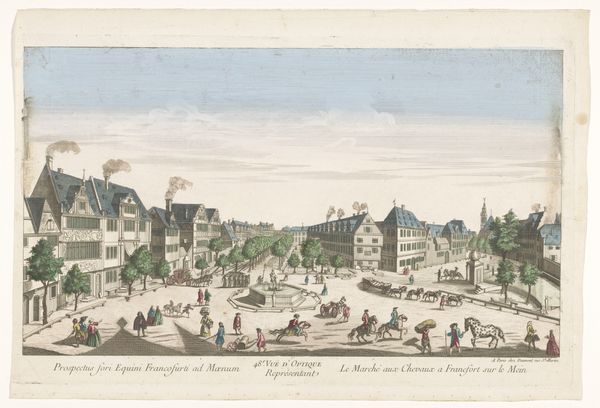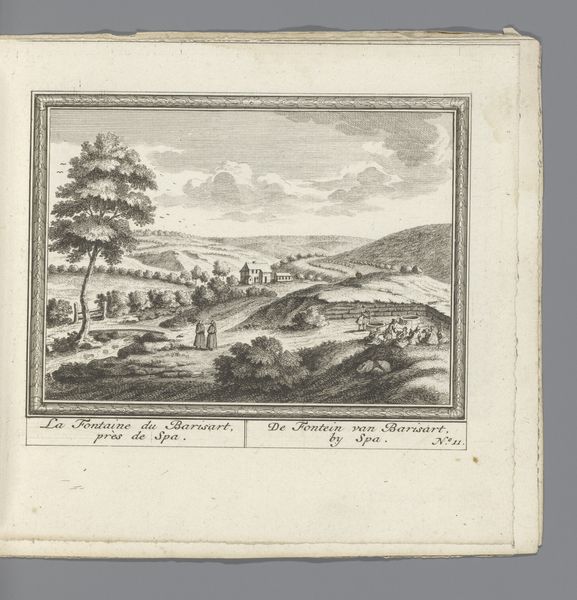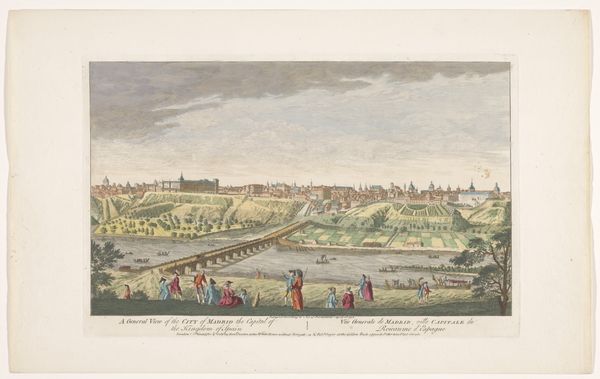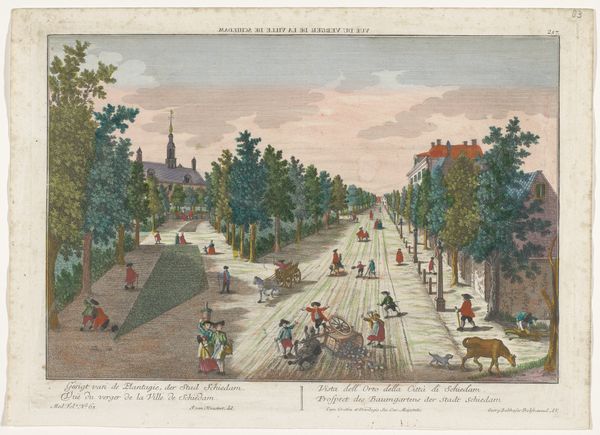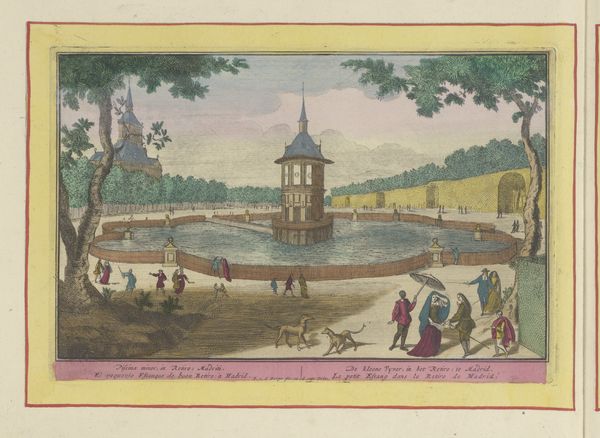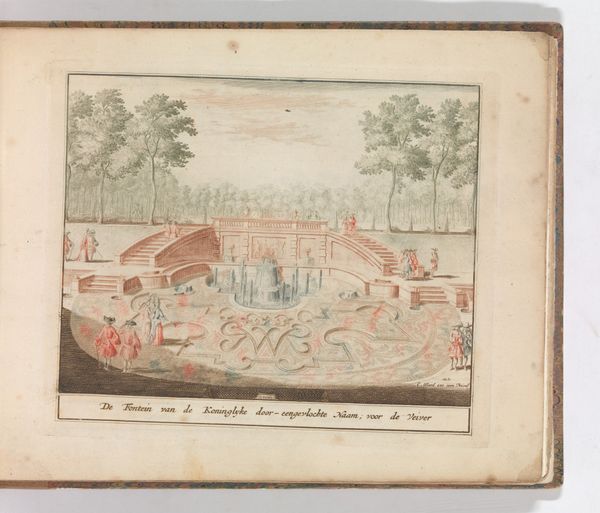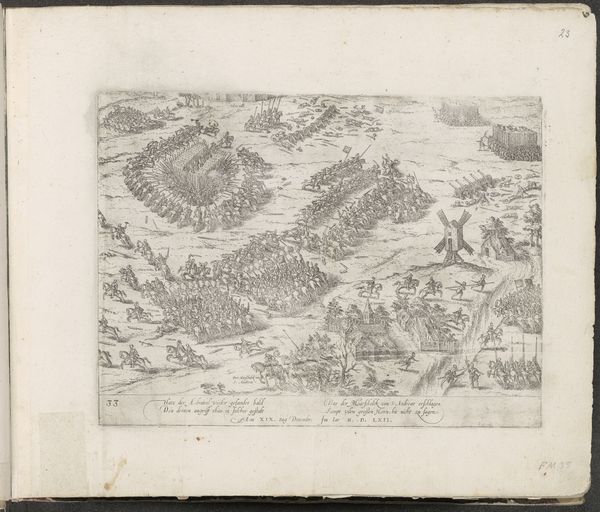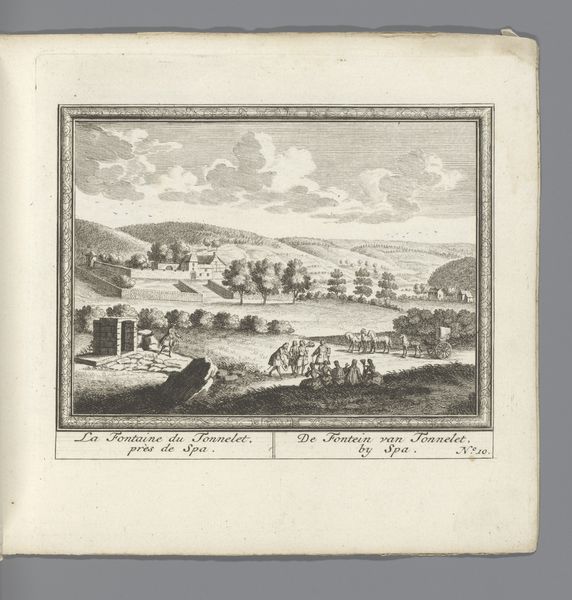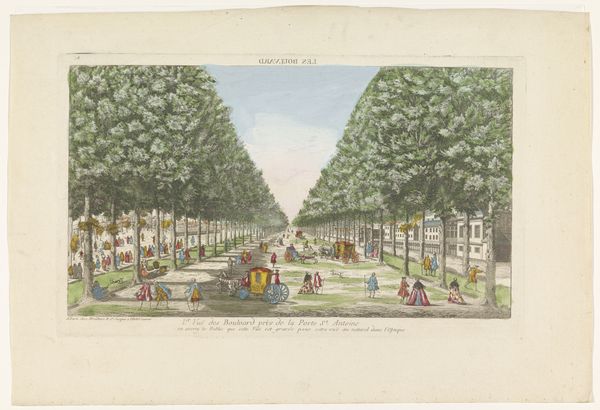
Dimensions: height 313 mm, width 429 mm
Copyright: Rijks Museum: Open Domain
Editor: So, this piece is entitled “Gezicht op een wildezwijnenjacht,” or "View of a Wild Boar Hunt," created sometime between 1742 and 1801 by Georg Balthasar Probst. It's a coloured-pencil drawing or print with watercolor and coloured pencil – it’s hard to tell. There's so much activity, all captured on one page! What jumps out at you about this scene? Curator: I see a carefully constructed spectacle. Look at the variety of materials involved – the paper support, the pigments, and the lines created. It compels me to consider the social context of production. We have to ask ourselves, how were these colored pencils manufactured? Who had access to them? The availability and consumption of these materials signal a specific class. Editor: That's a perspective I hadn't considered. It does seem like a luxury item. How would that affect its reception back then? Curator: Absolutely. The print's replication, likely through engraving or etching, demonstrates a commodification of aristocratic leisure. The print itself becomes a tool, disseminating ideals of social hierarchy. What does the artist’s process itself say about labor here? Notice, that everything is depicted as being so neatly ordered – and that itself has value. Editor: I guess the layered perspectives, with some characters observing the hunters, reflect the consumption patterns of leisure in art, too. I learned that material context frames not only its production but its interpretation! Curator: Exactly! And viewing art through materiality reveals how art objects themselves become a social performance, reflective of the relationship between making and the market.
Comments
No comments
Be the first to comment and join the conversation on the ultimate creative platform.
